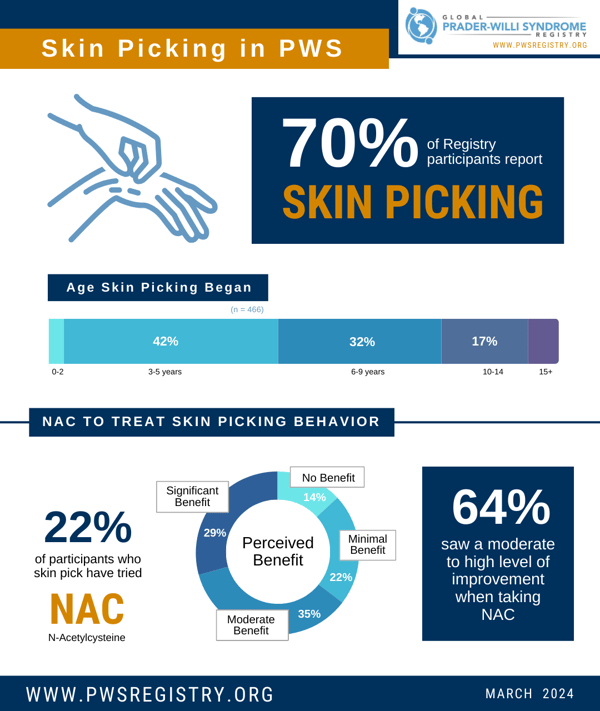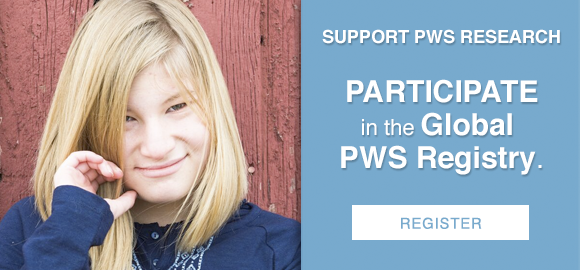Individuals with PWS often exhibit a variety of self-injurious behaviors, and one of the most common of these is skin picking. Individuals typically start with a fixation on some imperfection in the skin. This can be a rough or dry patch of skin, an insect bite, scab or a scratch. Picking at this spot can open a wound, which proves difficult to heal because of continued picking at the site. At minimum, skin picking impacts the overall quality of life. At its worst, skin picking can be severe enough to cause injury and scarring and, in some cases, lead to infections requiring antibiotics or even hospitalization.
Research into the causes of skin picking proposes a variety of possible reasons, and ongoing studies may shed light on the underlying causes of this behavior in individuals with PWS, including work by Dr. Scott Hall at Stanford University. There is some evidence that it is a form of obsessive-compulsive disorder. In PWS, specifically, it may be a form of self-stimulation. For some, it is so automatic they aren’t aware they are doing it, and for others, it is so compulsive that even if aware, they just can’t stop. Among participants in the Global PWS Registry, skin picking occurs in almost 70% of individuals, highlighting just how common it is. It is important to note that there are no significant differences in skin picking among registry participants by gender or genetic subtype.

For those who are experiencing skin picking, it starts relatively young, with more than 40% starting by age 5 and more than 70% starting by age 10. Regarding frequency for those who do skin picking, 80% of families report that it happens daily or multiple times per day. However, it may also come on or off in waves, where for weeks or months at a time it cycles between not being a problem at all and being a major issue. This presents a challenge to families working to identify what may be triggering episodes of skin picking for their loved one with PWS.
A variety of behavioral approaches can be taken to try and address skin picking, including redirecting the person’s attention. Pre-emptive steps can include moisturizing skin and monitoring or covering rough patches, bites, or other imperfections that may trigger picking to start. There are also mixed reports on the potential benefits of the dietary supplement N-acetyl cysteine (NAC) for skin picking [1, 2]. Within the Global PWS Registry, only ~22% of individuals with skin picking have tried NAC. However, for those who have tried it, more than half report moderate to significant benefit in reducing the severity of skin picking. If you are considering NAC for your loved one, please consult with your physician. Note also that not every formulation of NAC is the same, so some brands may work differently than others. Packaging that reduces exposure to the air may be helpful in preventing the degradation of the NAC.
In summary, skin picking is very common in PWS, starting in early childhood. Frequency, severity, and triggers can vary, making it a challenge for families to identify trends for their specific loved ones. Trying a variety of treatment approaches can help families figure out what works best for their situation.
Many thanks to the families who contribute data to the Global PWS Registry. For more information on the Global PWS Registry, including how to join or to update your surveys, please visit pwsregistry.org or email the Registry here.
-
Miller, J.L. and M. Angulo, An open-label pilot study of N-acetylcysteine for skin-picking in Prader-Willi syndrome. Am J Med Genet A, 2014. 164A(2): p. 421-4.
-
Wieting, J., et al., N-Acetylcysteine provides limited efficacy as a treatment option for skin picking in Prader-Willi syndrome. Am J Med Genet A, 2022. 188(3): p. 828-835.








